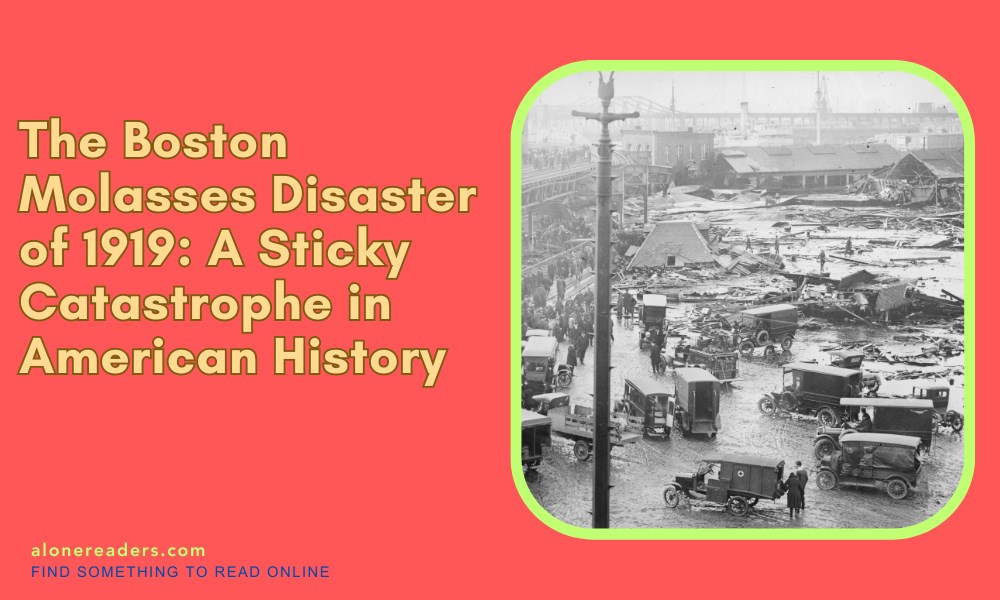
On January 15, 1919, Boston witnessed one of the most unusual and tragic industrial accidents in American history: the Boston Molasses Disaster. This catastrophic event unfolded when a massive storage tank filled with over 2.3 million gallons of molasses burst, unleashing a deadly wave of the sticky substance through the North End neighborhood. The disaster resulted in significant property damage, numerous injuries, and the tragic loss of 21 lives.
The tank, owned by the Purity Distilling Company, was situated at 529 Commercial Street. Constructed hastily and with inadequate safety measures, the tank had been a looming threat to the community for years. Residents had reported leaks and ominous groaning sounds from the structure, but their concerns were largely ignored by the company. On that fateful January day, unseasonably warm temperatures caused the molasses inside the tank to expand, increasing the internal pressure beyond the tank's capacity.
At around 12:30 PM, the tank exploded with a thunderous roar, sending rivets and shards of metal flying through the air. Witnesses described hearing a sound like a machine gun as the steel panels of the tank were violently ripped apart. The force of the explosion generated a wave of molasses estimated to be 25 feet high and moving at 35 miles per hour. This viscous wave swept through the streets, demolishing buildings, overturning vehicles, and trapping unsuspecting pedestrians and workers in its path.
The immediate aftermath was one of chaos and devastation. The sticky molasses solidified quickly in the cold January air, creating a suffocating sludge that made rescue efforts exceedingly difficult. Firefighters, police officers, and volunteers worked tirelessly to pull survivors from the wreckage and search for the missing. Horses, a common sight on Boston's streets at the time, were especially vulnerable and many perished in the deluge. The cleanup operation lasted for weeks, with crews using salt water from the harbor to help dissolve the molasses and sand to absorb it.
Beyond the physical destruction, the Boston Molasses Disaster had a profound impact on the affected community. Survivors grappled with trauma, and many lost their homes and livelihoods. The disaster also sparked a lengthy legal battle, as victims and their families sought justice and compensation from the United States Industrial Alcohol Company, the parent company of Purity Distilling. The litigation process lasted for six years, with the company ultimately being found liable for the accident due to negligence. The court's decision highlighted the inadequate construction and maintenance of the tank, as well as the company's failure to address prior warnings about its safety.
The Boston Molasses Disaster serves as a stark reminder of the importance of industrial safety and the potential consequences of neglecting it. The event led to stricter regulations and standards for industrial construction and maintenance, influencing safety protocols nationwide. It underscored the need for companies to prioritize the well-being of the communities in which they operate and to heed the warnings of those who live and work in the vicinity of industrial facilities.
In the years following the disaster, the story of the molasses flood became a part of Boston's folklore, often recounted with a mix of horror and incredulity. Despite the passage of time, the memory of that dark day in 1919 remains vivid, particularly for the descendants of those who lived through it. The site of the disaster is now home to a recreational complex, but the legacy of the molasses flood is preserved through historical markers and educational efforts.
Today, the Boston Molasses Disaster is studied not only as a peculiar historical event but also as a case study in industrial risk management and public safety. It stands as a testament to the enduring human spirit in the face of unexpected tragedy and serves as an enduring lesson in the importance of vigilance, accountability, and the relentless pursuit of safety in industrial practices.